Straight Up Guide to Cognitive Behavioral Therapy
These guides were born out of Noah and Christine’s frustrations with overly complicated and jargon-filled articles, newsletters, books, and therapy websites. Our mission is to create clear and practical guides in order to learn, grow from challenges, and lead more meaningful and impactful lives.
Cognitive Behavioral Therapy (CBT)
Cognitive behavioral therapy, or CBT, is a therapeutic approach that addresses distorted thinking, dysfunctional emotions, and maladaptive behaviors through goal-oriented interventions. The name refers to the integration of cognitive therapy and behavior therapy that CBT practitioners use with their patients. CBT is based on the cognitive model of psychopathology, which proposes that dysfunctional thinking, which influences the patient’s mood and behavior, is the source of psychological disturbances (Beck, 2011). However, CBT is almost always practiced with behavior therapy principles, and behaviorists would add the idea that maladaptive behavior reinforcement also produces psychological problems (Gehart, 2013).
As proposed by one of CBT’s leading theorists, Aaron Beck, and further articulated by his daughter, Judith Beck, the cognitive model describes how an individual’s spontaneous thoughts about a given life event, called automatic thoughts, fuel his or her emotional and behavioral reactions. CBT posits that automatic thoughts derive from core beliefs activated by life events to produce distorted thinking, maladaptive behaviors, and problematic emotions (Persons, 2008). Core beliefs, which vary in accuracy and functionality, are the result of an individual’s interactions with the world and other people, and are influenced by their genetic predisposition (Beck, 2011). Beck theorized that negative core beliefs essentially fall into two broad categories: those associated with helplessness and those associated with unlovability (Beck, 2011). A third category, associated with worthlessness, has also been described (Beck, 2011).
The usual course of treatment in cognitive behavior therapy involves an initial emphasis on identifying and modifying “automatic thoughts” that derive from the core beliefs. Automatic thoughts are reflex-like thoughts that automatically come to mind when a particular situation occurs. Automatic thoughts are learned, tend to “catastrophize” any situation, and are almost always believed by the individual. CBT therapists teach patients to identify these cognitions that are closest to conscious awareness, and to gain distance from them by learning how they might be distorted. Common cognitive distortions include mind reading, fortune telling, catastrophizing, labeling, discounting the positives, and negative filter, although there are many more.
The CBT model for change is straightforward. Since one’s thoughts and core beliefs were learned, they can also be unlearned, and more reality-based and functional new beliefs can be developed and strengthened through treatment. The fundamental assumption of CBT is that it is the individual’s interpretation of an event, not the event itself, that influences how he or she feels and behaves. If one can change the way one interprets an event, one can change the way one feels and behaves in reaction to it. In CBT, the therapist introduces interventions though cognitive restructuring to modify thinking patterns, meditation or relaxation for emotional regulation, and behavioral changes to combat maladaptive behaviors. The CBT therapist will use a combination of cognitive and behavioral interventions, thus leaving a fair degree of flexibility to the clinician. Cognitive restructuring might include thought records, identifying distortions, reframing, and cost-benefit analysis of various beliefs. Behavioral changes might include scheduled activities, limited exposure, and graded task assignments. CBT allows that either cognitive or behavioral interventions can effect change and lead to a reduction in symptoms.
CBT requires a sound therapeutic alliance in order to work, and emphasizes collaboration and active participation (Beck, 2011). The patient/therapist relationship in CBT is based on collaborative empiricism. The therapist and the patient work together to examine, test, and modify the patient’s thinking and behavior and develop more adaptive responses. The therapist’s role is to help the patient recognize his or her idiosyncratic style of thinking and modify it through the application of evidence and logic. CBT posits that just because an individual believes something does not necessarily mean it is true. Changing one’s thinking so it is more reality-based and useful helps one feel better and progress toward one’s goals. CBT focuses primarily on the present, and is not overly concerned with the origin of a problem. Instead, it focuses on what maintains the problem in the present, and how the patient thinks about the past in the present. CBT allows individuals to change their responses to people, places, and things, and worry less about forces beyond their control. CBT is problem-focused and action-oriented. It focuses only on what one can change.
References
Beck, J. S. (2011). Cognitive behavior therapy: basics and beyond (2nd ed.). New York: Guilford Press.
Gehart, D. (2013). Theory and treatment planning in counseling and psychotherapy. Belmont, California: Brooks Cole.
Leahy, R. L. (2003). Cognitive therapy techniques: a practitioner’s guide. New York: Guilford Press.
Persons, J.B. (2008). The case formulation approach to cognitive-behavior therapy. New York: The Guilford Press.
Christine Izquierdo and Noah Laracy are the co-founders of Straight Up Treatment, an anxiety disorder specialty treatment center. Straight Up Treatment utilizes a variety of cognitive-behavioral approaches to treat anxiety-based conditions such as Obsessive-Compulsive Disorder, Social and Performance Anxiety, Panic Disorder, Depression, and Generalized Anxiety.
You can learn more about them here.
You can read more guides here.






